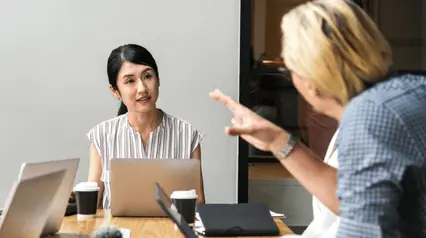What is Workplace Coaching?
Workplace coaching, employee coaching, or business coaching is the continuous two-way feedback between the employee and the coach with the intention to work on areas for improvement and reinforce strengths to sustain the progress of the employee’s performance. In other words, coaching in the workplace means empowering employees to be the best performers that they can be.
Importance
Workplace coaching is important to set employees from all industries (such as teachers, businessmen, managers, and the like) up for success in the workplace by providing the tools that workers can use to increase their knowledge and improve their skills. Through effective employee coaching, employers can cultivate their workers’ willingness to do the job, leading to higher job satisfaction and productivity.
The Responsibilities of a Coach
Ultimately, a workplace coach is responsible for empowering and mentoring an employee to be the best version of themselves at work. For workplace coaches to be effective and build up a company’s workforce, they should be mindful of the following before coaching begins:
Develop the right mindset and perspective
The coach should have a firm belief in the value of the employee. The coach must begin with the mindset that the employee is worth the coaching effort.
Cultivate the optimum environment for professional growth
The coaching environment ideally should be conducive to learning and employee communication. It needs to be a safe space for open, honest, two-way feedback between the employee and the coach.
Uncover specific areas of improvement in knowledge, skill, and performance
The coach (and the employee) should be able to realize if the performance issue/s arise from a lack of knowledge, skill gaps, or lack of direction to properly execute a job. The coach should gather information based on the employee’s performance to identify areas for improvement.
Evaluate an employee’s readiness to be coached
The employee is likely receptive to coaching if the environment is conducive and if the coach is ready. Also, consider asking questions like how’s the day going so far for the employee and observe nonverbal cues and body language to assess if the employee may be open to coaching at the moment.
Apply appropriate coaching styles and techniques
Intentionality and preparation are important for coaching to be effective. The coach needs to adjust the method of coaching according to the employee’s learning style: visual, kinesthetic, read/write, auditory. The coaching process needs to be communicated well with the employee to get the most out of the session, leading to better outcomes.

Benefits of Coaching To Employees
How to Coach Employees Effectively
Reinforce a continuous approach
Coaching should be done daily and not just during scheduled weekly or monthly sessions. Whether it’s just a quick huddle, via video conference, one-on-one, catch-up, team meeting, as long as it’s an opportunity to address possible improvement, it is considered coaching.
Coach according to employee’s development needs
Similar areas of improvement or challenges may be discovered during coaching and there may be a tendency to use one generic action plan for different employees–be aware that one approach may not apply to all. The coach should help the employee formulate own action plans and make sure that they are doable for the employee.
Focus on future performance
Coaching is not meant to assess past performance. The information gathered from past performance is meant to help determine what the employee should improve on moving forward.
Practice two-way communication between employee and coach
The coach or supervisor is not supposed to do all the talking during coaching. Majority of the input should be from the employee while the coach should guide the direction of the session with the intention to help the employee realize areas for improvement. It can help to keep them accountable. Once identified, the employee comes up with an action plan and the coach is responsible for helping determine if it is a SMART action plan.
SMART Action Plan
To make sure that action plans are S.M.A.R.T., ask the following questions:
S – Specific
- What exactly needs to be done to address the issue?
- Who will do it?
- What steps will be taken?
M – Measurable
- What will be the measure of success?
- How will progress be checked?
A – Attainable
- What are the limitations?
- Do we have the resources right now?
- Can we do this within the timeline?
R – Relevant
- Has the employee understood the importance of the action plans?
- Is this aligned with the organization’s objectives?
- Will this help achieve the goal?
- Will this actually impact the customer?
T – Time-bound
- What is meant to be achieved by the deadline?
- Is there a deadline set to complete the action?
- What dates will the action/s need to be done?
Once the coach and the employee agree that the action plans are indeed SMART, document the coaching session, commit to the action plans, and monitor employee progress. Ongoing performance management can be done to ensure the task and outputs meets the requirement in an effective and efficient manner.
Empower Employees with These Tools
Use tools with cloud-based storage like SafetyCulture (formerly iAuditor) to record the coaching session and document the ongoing progress of the employee. Take advantage of the following features relevant to employee coaching:
- SafetyCulture group administrators can control the permissions of SafetyCulture users to make sure that the right coaches get the right coaching forms according to their department’s needs.
- SafetyCulture’s Analytics can help monitor coaching items, look out for trends, and observe if action plans are indeed working to help employees improve.




